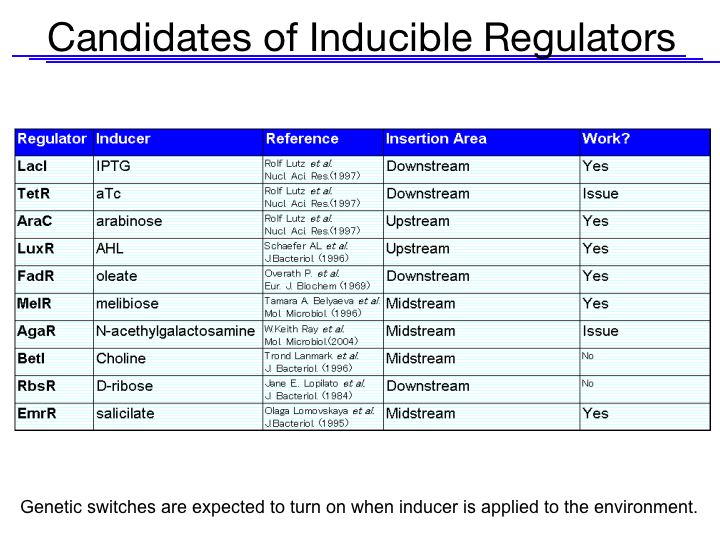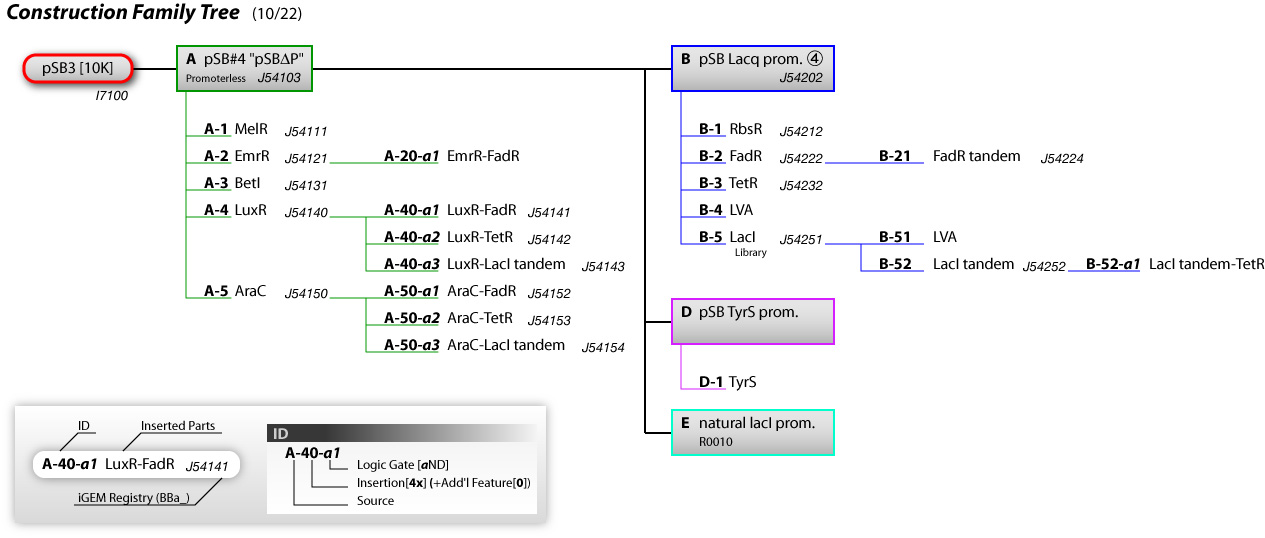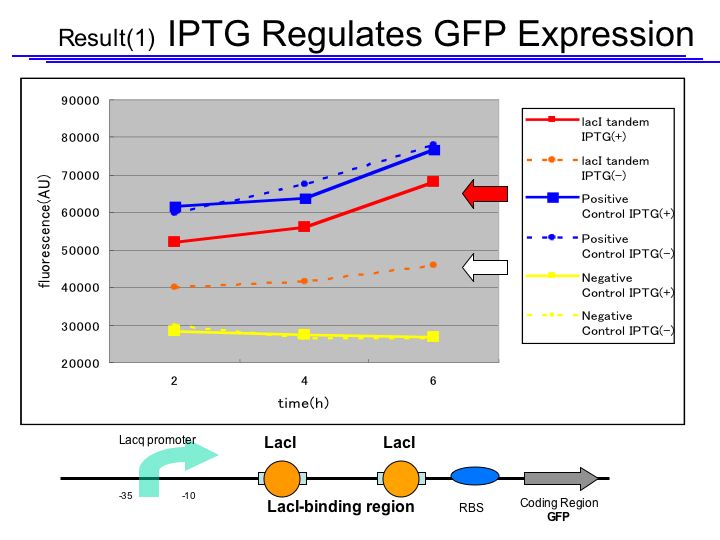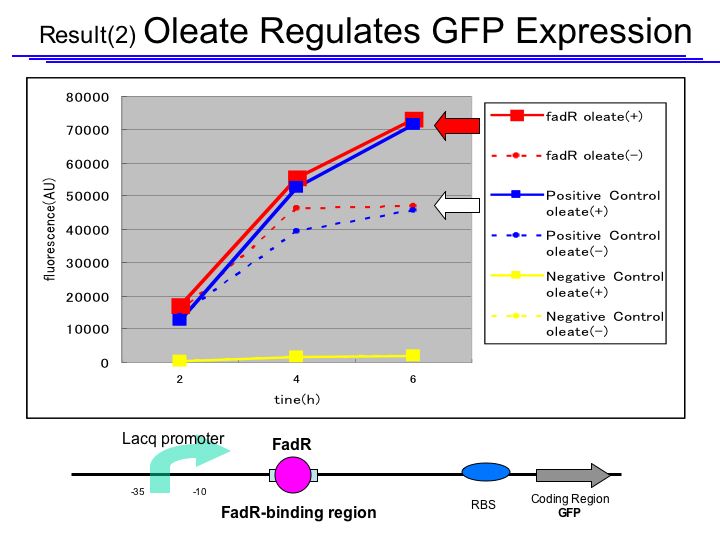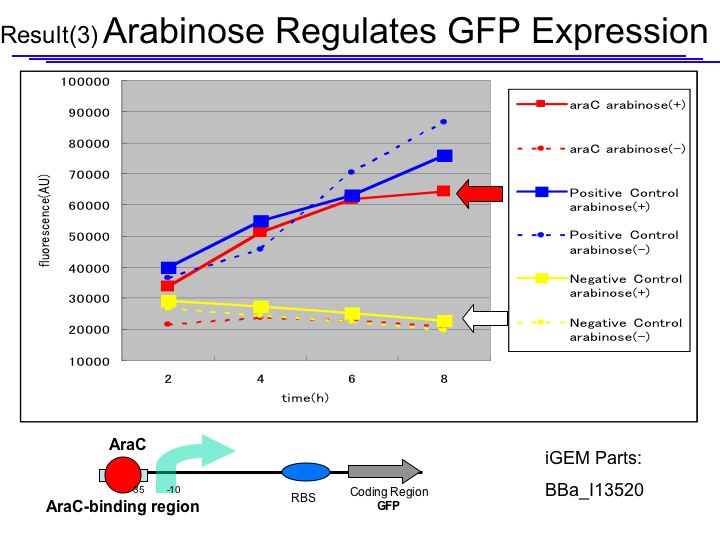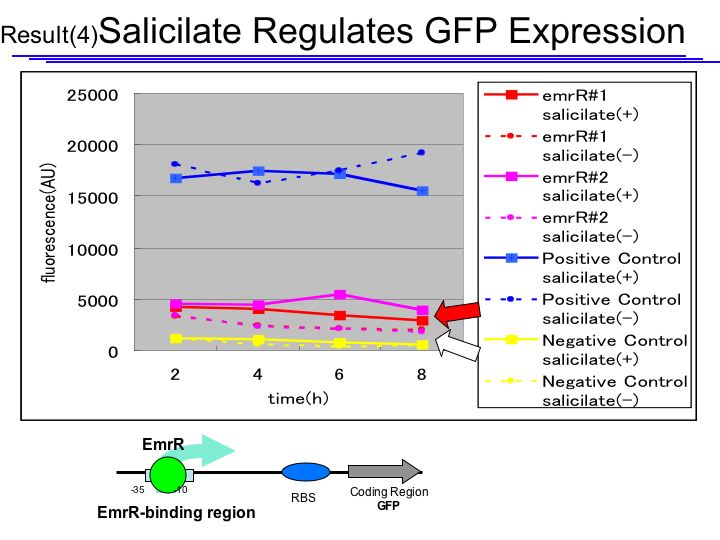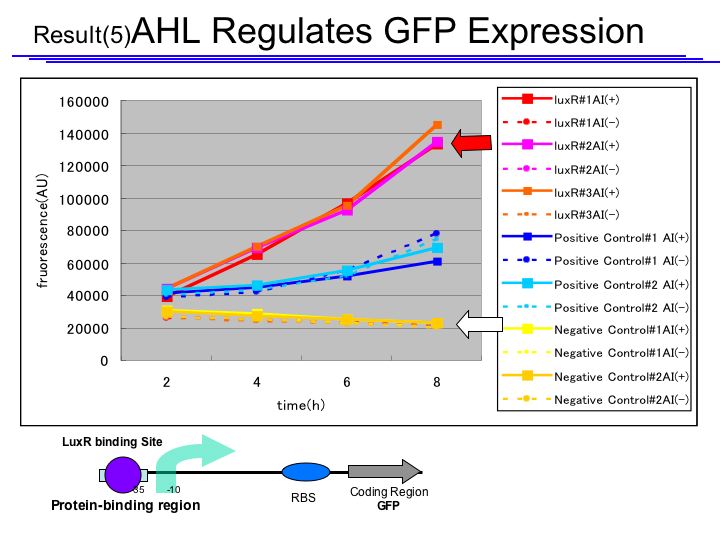Tokyo Alliance: Conclusion
From 2006.igem.org
Contents |
Results
We searched several number of, actually at least 7, regulators inducible by different chemicals. This list is the candidates of such a regulator.
Using these regulatory sequences, we constructed these iGEM parts. There are 22 different logic gates actually made. Some of them are ANDgates.
We constructed YES gates and AND gates shown above accorinding to our Procedure.
Construction Index
- A pSB#4 "pSBΔP" J54103
- B pSB Lacq prom. #4 J54202
- C pSB LacI prom. #1
- D pSB TyrS prom.
- D-1 TyrS
- E natural LacI prom.
Tokyo Alliance iGEM registry list
Data
Conclusion
- Conclusion
We can say we expanded the number of regulator genes we can use to build logic gates and through this project we made simple constructing method.
- Future Work
It must be possible to construct functioning AND gates with our systematic construction strategy. And with same method, it is possible to make ANDAND gates, also. In order to make Noughts and Crosses game, we need 11 AND gates and 10 ANDAND gates.
Not tested yet, we already have constructed 7AND gates. It may not be so hard to complete the set of logic gates and combine them into Noughts and Crosses.
We recently change transition diagram and found that the number of inputs can be reduced into just 6. So the implementation of SYANAC will be little bit easier.
